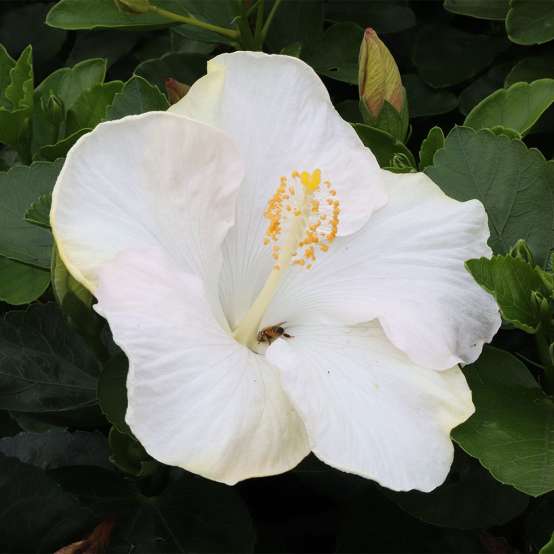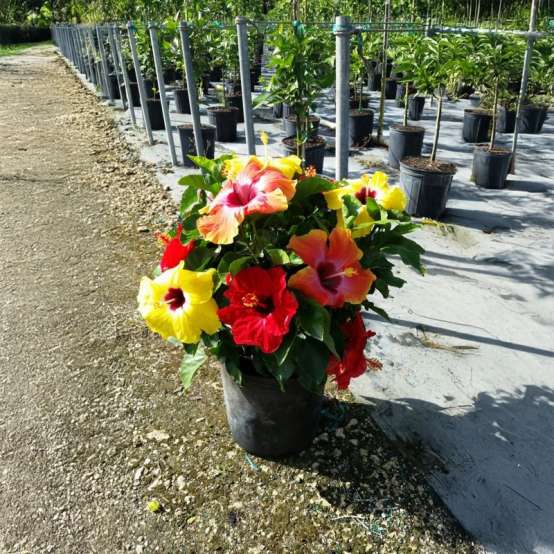Clicking the following controls will change the main image displayed above.

Meet the Breeder
Jim Berry
Grand Saline, TX
HOLLYWOOD HIBISCUS® HOT SHOT™

Tropical Hibiscus
Hibiscus Rosa-sinensis
'14-0704-02'
PP#35,448


- Long blooming
- Heat tolerant
- Description
The vivid red blooms on Hollywood Hibiscus® Hot Shot™ tropical hibiscus draw the attention of visitors and pollinators with ease. It bears big, satellite dish-shaped blooms all season long. The flowers of Hollywood Hibiscus are long-lasting, giving you way more color with much less work.
As tropical hibiscus, Hollywood Hibiscus cannot tolerate cold temperatures. However, they make excellent plants for summer color in cold areas and are easy to grow in containers. Their big, colorful flowers also attract hummingbirds. If you live in a cold climate and wish to bring your Hollywood Hibiscus indoors for winter, keep it in a cool, bright spot, and avoid both under and overwatering. The plant is likely to respond to its move indoors by dropping several leaves and ceasing flowering. However, once the weather warms back up and your Hollywood Hibiscus can go outdoors again, it will quickly recover and get back to being lush and full of blooms.
*Hollywood Hibiscus liners and finished plants are available through the network of licensed growers.
- USDA Zone
- 9 - 11 (20°F/-7°C)
- Exposure
- Full sun
- Height
- 5'
- Width
- 4'
- Bloom Time
- Spring through fall
- Flower Color
- Red
- Foliage Color
- Green






